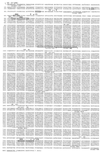The nucleotide sequence of koala (Phascolarctos cinereus) retrovirus: a novel type C endogenous virus related to Gibbon ape leukemia virus
- PMID: 10756041
- PMCID: PMC111943
- DOI: 10.1128/jvi.74.9.4264-4272.2000
The nucleotide sequence of koala (Phascolarctos cinereus) retrovirus: a novel type C endogenous virus related to Gibbon ape leukemia virus
Abstract
A novel retrovirus, morphologically consistent with mammalian C-type retroviruses, was detected by electron microscopy in mitogen-stimulated peripheral blood mononuclear cell cultures from 163 koalas and in lymphoma tissue from 3 koalas. PCR amplified provirus from the blood and tissues of 17 wild and captive koalas, and reverse transcriptase-PCR demonstrated viral mRNA, viral genomic RNA, and reverse transcriptase activity in koala serum and cell culture supernatants. Comparison of viral sequences derived from genomic DNA and mRNA showed identity indicative of a single retroviral species-here designated koala retrovirus (KoRV). Southern blot analysis of koala tissue genomic DNA using labelled KoRV probes demonstrated banding consistent with an endogenous retrovirus. Complete and apparently truncated proviruses were detected in DNA of both clinically normal koalas and those with hematopoietic disease. KoRV-related viruses were not detected in other marsupials, and phylogenetic analysis showed that KoRV paradoxically clusters with gibbon ape leukemia virus (GALV). The strong similarity between GALV and KoRV suggests that these viruses are closely related and that recent cross-host transmission has occurred. The complete proviral DNA sequence of KoRV is reported.
Figures






References
-
- Andersson A, Svensson A, Rolny C, Andersson G, Larsson E. Expression of human endogenous retrovirus ERV-3 (HERV-R) mRNA in normal and neoplastic tissues. Int J Oncol. 1998;12:309–313. - PubMed
-
- Backhouse T C, Bolliger A. Morbidity and mortality in the koala (Phascolarctos cinereus) Aust J Zool. 1961;9:24–37.
-
- Boeke J D, Stoye J P. Retrotransposons, endogenous retroviruses, and the evolution of retroelements. In: Coffin J M, et al., editors. Retroviruses. Cold Spring Harbor, N.Y: Cold Spring Harbor Laboratory Press; 1997. pp. 343–436. - PubMed
-
- Booth R J, Blanshard W. Diseases of koalas. In: Fowler M E, Miller R E, editors. Zoo and wild animal medicine, current therapy 4. W. B. Philadelphia, Pa: Saunders; 1999. pp. 321–333.
-
- Burtonboy G, Delferriere N, Mousset B, Heusterspreute M. Isolation of a C-type retrovirus from an HIV infected cell line. Arch Virol. 1993;130:289–300. - PubMed
Publication types
MeSH terms
Substances
Associated data
- Actions
LinkOut - more resources
Full Text Sources
Other Literature Sources
Research Materials
Miscellaneous

